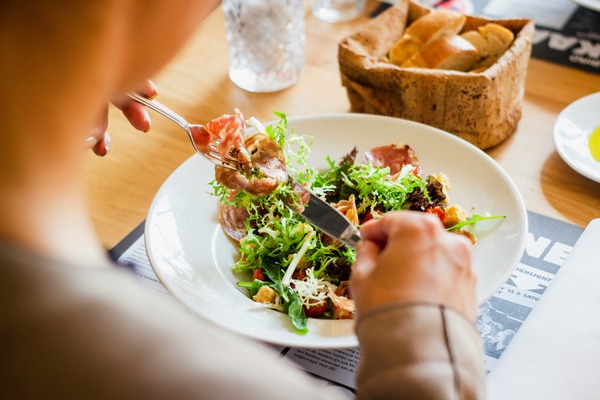
Creating a Delicious Online Presence: The Importance of Web Design for Restaurants
Having a strong online presence is crucial for the success of any business, and restaurants are no exception. With the increasing reliance on the internet for information and decision-making, a well-designed website can make all the difference in attracting and retaining customers. Web design plays a vital role in creating a positive user experience, establishing a strong brand identity, and optimizing your restaurant’s online visibility.
Key Takeaways
- Web design is crucial for restaurants to attract and retain customers.
- A strong brand identity can be built through effective web design.
- User-friendly websites with mobile-responsive design are essential for restaurants.
- Visuals and descriptions can enhance online menus and increase customer engagement.
- Integrating online ordering and reservations, leveraging social media, and optimizing for local search can all improve a restaurant’s online presence.
The Role of Web Design in Building a Strong Brand Identity
Branding is essential for restaurants to differentiate themselves from their competitors and create a unique identity that resonates with their target audience. A well-designed website can help establish and reinforce this brand identity. From the choice of colors, fonts, and imagery to the overall layout and user interface, every element of web design should align with your restaurant’s brand personality.
For example, if your restaurant aims to create a cozy and intimate atmosphere, your website should reflect this through warm colors, soft fonts, and inviting imagery. On the other hand, if your restaurant focuses on modern and innovative cuisine, your website should have a sleek and contemporary design that reflects this style. Consistency in branding across all touchpoints, including your website, will help build trust and recognition among your customers.
Creating a User-Friendly Website for Your Restaurant
User experience is a critical aspect of web design that can significantly impact the success of your restaurant’s website. A user-friendly website ensures that visitors can easily navigate through your site, find the information they need, and complete desired actions such as making reservations or placing orders.
To create a user-friendly website, it is important to prioritize simplicity and clarity in design. Avoid cluttering your pages with excessive text or images that can overwhelm visitors. Instead, focus on providing clear and concise information that is easy to read and understand.
Additionally, make sure that your website is easy to navigate by organizing your content into logical categories and using intuitive menus. Include a search function to help users find specific information quickly. It is also crucial to optimize your website’s loading speed, as slow-loading pages can frustrate users and lead to high bounce rates.
Importance of Mobile-Responsive Design for Restaurants
| Metrics | Importance |
|---|---|
| Mobile traffic | Over 50% of website traffic comes from mobile devices |
| User experience | Mobile-responsive design improves user experience and increases engagement |
| Search engine optimization | Google prioritizes mobile-responsive websites in search results |
| Brand reputation | A mobile-responsive website reflects positively on a restaurant’s brand reputation |
| Online ordering | Mobile-responsive design makes it easier for customers to place online orders |
With the rise of mobile usage, having a mobile-responsive website is no longer optional but essential for restaurants. Mobile devices account for a significant portion of internet traffic, and many people use their smartphones to search for restaurants, view menus, and make reservations or orders.
A mobile-responsive design ensures that your website adapts to different screen sizes and resolutions, providing an optimal viewing experience on smartphones and tablets. This means that your website will be easy to navigate, read, and interact with on any device, enhancing the user experience and increasing the chances of converting visitors into customers.
Furthermore, having a mobile-responsive website can also improve your search engine rankings. Search engines like Google prioritize mobile-friendly websites in their search results, making it easier for potential customers to find your restaurant online.
Enhancing Your Online Menu with Visuals and Descriptions
The menu is one of the most important elements of a restaurant’s website. It is not only a tool for showcasing your offerings but also an opportunity to entice and engage potential customers. A well-designed menu can make a significant impact on the overall user experience and influence customers’ decision-making process.
When designing your online menu, it is important to strike a balance between visuals and descriptions. High-quality images of your dishes can make them more appealing and help customers visualize what they will be ordering. However, it is equally important to provide detailed descriptions that highlight the unique features and flavors of each dish.
Consider using descriptive language that evokes emotions and creates a sense of anticipation. Include information about ingredients, cooking methods, and any special dietary considerations. Additionally, consider incorporating customer reviews or ratings for each dish to provide social proof and build trust.
Integrating Online Ordering and Reservations into Your Website

In today’s fast-paced world, convenience is key for customers. Integrating online ordering and reservations into your website can streamline the process for both your customers and your staff, enhancing the overall customer experience.
Online ordering allows customers to browse your menu, select their desired items, customize their orders, and make payments all from the comfort of their own homes. This not only saves time for your customers but also reduces the workload on your staff by automating the order-taking process.
Similarly, online reservations make it easy for customers to book a table at your restaurant without having to make a phone call. They can simply visit your website, select their preferred date and time, and receive an instant confirmation. This eliminates the need for back-and-forth communication and reduces the chances of errors or misunderstandings.
By integrating online ordering and reservations into your website, you can provide a seamless and convenient experience for your customers while also improving operational efficiency for your restaurant.
Using Social Media to Amplify Your Restaurant’s Online Presence
Social media has become an integral part of our daily lives, and it presents a valuable opportunity for restaurants to connect with their target audience, build brand awareness, and drive customer engagement. By leveraging social media effectively, you can amplify your restaurant’s online presence and attract a larger audience.
Firstly, it is important to choose the right social media platforms that align with your target audience and brand identity. For example, if you are targeting a younger demographic, platforms like Instagram or TikTok may be more effective in reaching them. On the other hand, if you are targeting professionals or business travelers, platforms like LinkedIn or Twitter may be more suitable.
Once you have chosen the right platforms, focus on creating engaging content that showcases your restaurant’s unique offerings, behind-the-scenes glimpses, and customer testimonials. Encourage user-generated content by running contests or promotions that encourage customers to share their experiences at your restaurant.
Additionally, engage with your audience by responding to comments, messages, and reviews in a timely and professional manner. This shows that you value your customers’ feedback and are committed to providing excellent service.
Leveraging Customer Reviews to Build Trust and Credibility
Customer reviews play a crucial role in building trust and credibility for your restaurant. In today’s digital age, potential customers often rely on online reviews to make informed decisions about where to dine. Positive reviews can attract new customers, while negative reviews can deter them.
To leverage customer reviews effectively, it is important to encourage satisfied customers to leave reviews on platforms like Google, Yelp, or TripAdvisor. This can be done through email follow-ups, social media posts, or even in-person requests. Make it easy for customers to leave reviews by providing direct links or instructions on how to do so.
However, it is equally important to manage negative reviews in a professional and constructive manner. Responding promptly and addressing any concerns or issues raised by the customer shows that you care about their experience and are committed to resolving any problems. This can help mitigate the impact of negative reviews and demonstrate your dedication to customer satisfaction.
Tips for Optimizing Your Website for Local Search
For restaurants, local search optimization is crucial for attracting customers in your area who are actively searching for dining options. By optimizing your website for local search, you can increase your visibility in search engine results and drive more targeted traffic to your site.
To optimize your website for local search, start by including relevant keywords in your website’s content, meta tags, and URLs. Focus on keywords that are specific to your location and the type of cuisine or dining experience you offer.
Additionally, create a Google My Business listing for your restaurant and ensure that all information is accurate and up-to-date. This includes your restaurant’s name, address, phone number, website URL, and opening hours. Encourage customers to leave reviews on your Google My Business listing, as this can improve your local search rankings.
Furthermore, consider creating location-specific landing pages on your website that target specific neighborhoods or areas. This can help you rank higher in local search results for customers searching for restaurants in those specific locations.
The Power of Web Design in Attracting and Retaining Customers
Web design plays a crucial role in the success of restaurants by creating a strong online presence, establishing a brand identity, and enhancing the user experience. A well-designed website can attract and retain customers by providing a positive and convenient experience, showcasing your offerings effectively, and building trust and credibility through customer reviews.
By prioritizing user-friendly design, mobile responsiveness, and integration of online ordering and reservations, you can streamline the customer journey and make it easier for customers to engage with your restaurant. Leveraging social media effectively and optimizing your website for local search can further amplify your online presence and attract a larger audience.
Investing in professional web design is no longer optional but essential for restaurants that want to thrive in the digital age. By understanding the importance of web design and implementing best practices, you can position your restaurant for success and stand out from the competition.
If you’re a restaurant owner looking to enhance your online presence, you may want to consider the benefits of having a custom WordPress website. A custom website allows you to tailor your online platform to suit your specific needs and showcase your unique brand identity. In addition, mobile responsiveness is crucial for any website in today’s digital landscape. With more and more people accessing the internet through their mobile devices, it’s essential that your website is optimized for mobile viewing. To learn more about the advantages of a custom WordPress website and the importance of mobile responsiveness, check out these informative articles from Snowberry Media: The Benefits of Having a Custom WordPress Website and Why Mobile Responsiveness is Crucial for Your Website. Ready to take your restaurant’s online presence to the next level? Book a call with Snowberry Media today: Book a Call.
FAQs
Web design for restaurants is the process of creating a website that is specifically tailored to the needs of a restaurant. It involves designing a website that is visually appealing, easy to navigate, and provides all the necessary information about the restaurant.
Web design is important for restaurants because it is often the first point of contact between the restaurant and potential customers. A well-designed website can help attract new customers, provide important information about the restaurant, and make it easy for customers to make reservations or place orders.
Some key features of a good restaurant website include a clear and easy-to-use navigation menu, high-quality images of the restaurant and its food, an online menu with prices, information about the restaurant’s location and hours of operation, and the ability to make reservations or place orders online.
Some common mistakes to avoid in restaurant web design include using low-quality images, cluttering the website with too much information, making it difficult for customers to find what they are looking for, and not optimizing the website for mobile devices.
To create a successful website, a restaurant owner should start by identifying their target audience and designing a website that meets their needs. They should also focus on creating a visually appealing website that is easy to navigate and provides all the necessary information about the restaurant. Finally, they should optimize the website for search engines and make it mobile-friendly.



